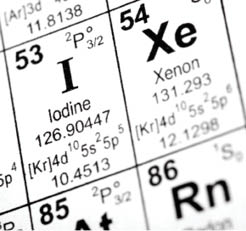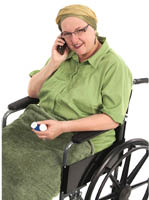 :dropcap_open:C:dropcap_close:onventional oncology and alternative medicine are often considered to be on opposite ends of the medical spectrum. However, cancer patients are increasingly seeking out alternative options such as chiropractic, naturopathy, and acupuncture as complementary practices to augment their cancer treatment. An integrative approach to cancer care that combines both conventional treatment and complementary therapies is an approach that patients want and a model that should be more accessible for patients.
:dropcap_open:C:dropcap_close:onventional oncology and alternative medicine are often considered to be on opposite ends of the medical spectrum. However, cancer patients are increasingly seeking out alternative options such as chiropractic, naturopathy, and acupuncture as complementary practices to augment their cancer treatment. An integrative approach to cancer care that combines both conventional treatment and complementary therapies is an approach that patients want and a model that should be more accessible for patients.
Today there are integrative settings where oncology patients are treated with scientifically supported complementary therapies, and where the medical community and the alternative community communicate and cooperate for the good of the patient. Integrative medicine offers numerous benefits to oncology patients, including reduction in suffering from prescribed medical treatments and treatment of the whole person instead of just their disease. One of the leading hospitals to embrace integrative medicine is Cancer Treatment Centers of America® (CTCA).
At CTCA, diverse care teams work together to provide the best treatment plan for the patient-teams consisting of not just an oncologist and a nurse care manager, but often a dietician, naturopath, social worker, chiropractor, and spiritual advisor. This group meets regularly to discuss all aspects of the patient’s care, including physical, emotional, and spiritual needs. The patient is the sole focus of the treatment plan, with the team of practitioners surrounding the patient. In this integrative setting, the team considers not only the side effects of surgery, radiation, and chemotherapy, but also what non-drug therapies could benefit the patient during treatment.
:quoteright_open:This group meets regularly to discuss all aspects of the patient’s care, including physical, emotional, and spiritual needs.:quoteright_close:
Unfortunately, because some supplements can negatively interact with chemotherapy and radiation therapy, patients are often advised by their physicians to avoid supplements altogether. As a result, those patients might seek complementary alternatives on their own or seek the counsel of practitioners who are inexperienced in treating cancer patients. In either case, they will not benefit from the expertise of practitioners who have an appropriate understanding of the interactions supplements may have with conventional oncology treatments. At CTCA, on the other hand, integrative teams experienced in the appropriate use of supplements can often safely enhance the medical treatment and help manage some of the side effects of chemotherapies.
Patients who seek chiropractic care most frequently do so with complaints of pain. After a thorough assessment, a chiropractor may suspect that the patient has some form of cancer and refer the patient for appropriate oncology follow up. And, while a cancer diagnosis should not prevent the chiropractor from locating and treating vertebral subluxation, chiropractors do need to proceed with caution, working in tandem with the patient’s oncology care team. In fact, the chiropractor could serve as an integral part of the care team, apprising the team of any new chiro-related symptoms that may be related to disease progression. CTCA chiropractors have access to their patients’ latest scans and tests, allowing them to utilize the most effective, most appropriate, and safest techniques for those patients.
It is widely accepted in chiropractic that a “subluxation free” body will best adapt to both physical and emotional stress. Recent studies by Bakris, et al., (2007), Kaminskyj, Frazier, Johnstone, & Gleberzon (2010), and Teodorcyzk-Injeyan, McGregor, Ruegg & Injeyan (2010), have validated some of the general health benefits of spinal manipulation, including improvements for hypertension, asthma, and antibody production. There is a need in the chiropractic community for more studies like these which will further validate chiropractic use. CTCA has integrated chiropractic therapy into its care model for over five years and is further studying the benefits of chiropractic care for cancer patients.
Following are just a few examples of the clinical benefits of chiropractic care at CTCA: Surgical patients are invited to see the chiropractor on staff before and after surgical procedures to address muscular and skeletal complaints associated with the procedure, bed rest, or exacerbated pre-existing conditions. Chiropractors at CTCA also treat many patients who are undergoing radiation treatments. Radiation therapy often requires patients to hold their bodies in uncomfortable positions for extended periods of time, causing pain and delaying treatment even for people who have never experienced neck or back pain before. Radiation therapy may also cause tissue fibrosis, which can be readily managed with chiropractic care.
Meanwhile, chemotherapy can cause side effects that include nausea, headaches, muscle soreness, balance disturbance, and neuropathy, which can be addressed by a chiropractor who can offer the patient non-medicinal relief. Using chiropractic as a non-drug alternative for pain relief can reduce the risk of drug interactions and the side effects of pain medications.
:dropcap_open:Radiation therapy may also cause tissue fibrosis, which can be readily managed with chiropractic care.:quoteleft_close:
Ultimately, the chiropractor’s role in the integrative oncology setting is to test and monitor the patient’s musculoskeletal health, as well as help alleviate the numerous side effects of the patient’s course of therapy. As new symptoms arise, the chiropractor has the ability to determine if certain symptoms are related to the progression of the disease or if, instead, they are musculoskeletal in nature or even a side effect of treatment.
The chiropractor must choose the appropriate and safest form of adjusting. By adjusting subluxations, the chiropractor can reduce pain and inflammation, improve the body’s ability to heal itself, increase the overall well-being of the patient, and play a key role in the integrative approach where the patient benefits from the combined expertise of multiple disciplines.
References
Bakris G, Dickholtz M Sr, Meyer PM, Kravitz G, Avery E, Miller M, Brown J, Woodfield C, Bell B. Atlas vertebra realignment and achievement of arterial pressure goal in hypertensive patients: a pilot study. J Hum Hypertens. 2007 May;21(5):347-52. Epub 2007 Mar 2.
Kaminskyj A, Frazier M, Johnstone K, Gleberzon BJ. Chiropractic care for patients with asthma: A systematic review of the literature. J Can Chiropr Assoc. 2010 Mar;54(1):24-32.
Teodorcyzk-Injeyan JA, McGregor M, Ruegg R, Injeyan HS. Interleukin 2-regulated in vitro antibody production following a single spinal manipulative treatment in normal subjects. Chiropr Osteopat. 2010 Sep 8;18:26



 But some may wonder why cancer patients would want to go anywhere in the vicinity of a chiropractor. I am hoping your answer is the same as mine and my employer’s: “why wouldn’t they?” Richard J. Stephenson, the founder and chairman of Cancer Treatment Centers of America, is an advocate of chiropractic care because he has reaped the benefits of chiropractic adjustments for years. He recognized how he functioned more optimally and realized that the patients in his cancer centers would most definitely benefit from chiropractic as well.
But some may wonder why cancer patients would want to go anywhere in the vicinity of a chiropractor. I am hoping your answer is the same as mine and my employer’s: “why wouldn’t they?” Richard J. Stephenson, the founder and chairman of Cancer Treatment Centers of America, is an advocate of chiropractic care because he has reaped the benefits of chiropractic adjustments for years. He recognized how he functioned more optimally and realized that the patients in his cancer centers would most definitely benefit from chiropractic as well. 


 :dropcap_open:C:dropcap_close:onventional oncology and alternative medicine are often considered to be on opposite ends of the medical spectrum. However, cancer patients are increasingly seeking out alternative options such as chiropractic, naturopathy, and acupuncture as complementary practices to augment their cancer treatment. An integrative approach to cancer care that combines both conventional treatment and complementary therapies is an approach that patients want and a model that should be more accessible for patients.
:dropcap_open:C:dropcap_close:onventional oncology and alternative medicine are often considered to be on opposite ends of the medical spectrum. However, cancer patients are increasingly seeking out alternative options such as chiropractic, naturopathy, and acupuncture as complementary practices to augment their cancer treatment. An integrative approach to cancer care that combines both conventional treatment and complementary therapies is an approach that patients want and a model that should be more accessible for patients.
